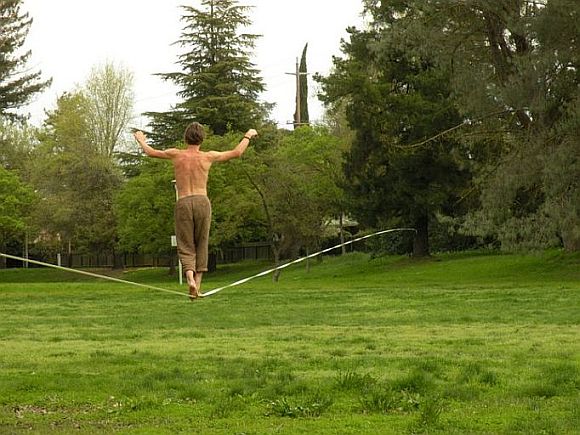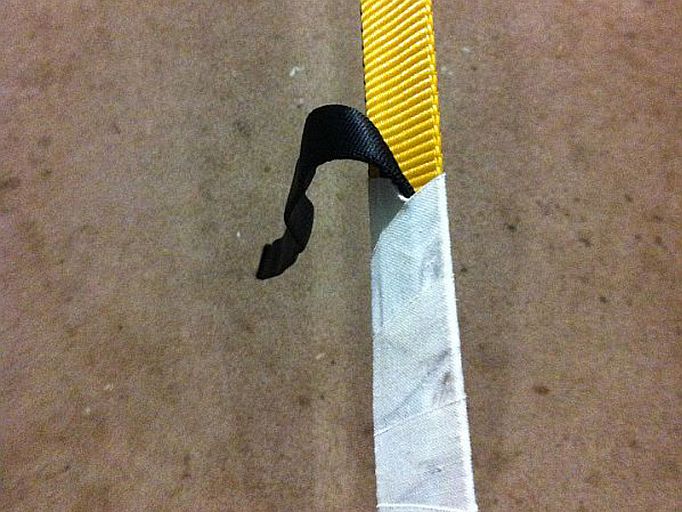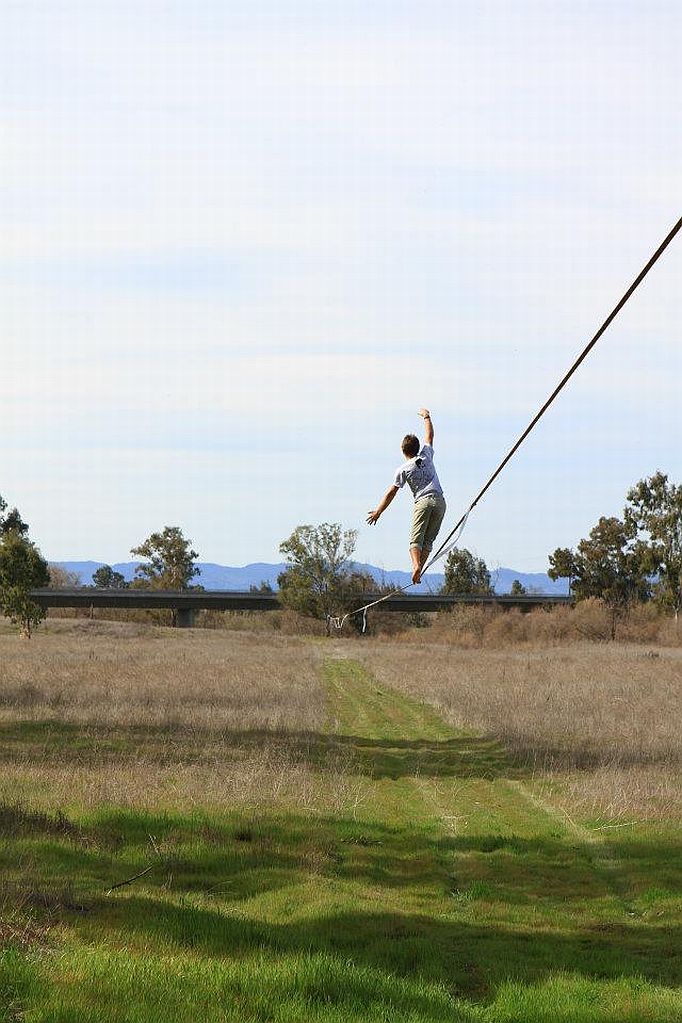You have no items in your shopping cart.
0
You have no items in your shopping cart.
Have you ever gone slacklining on a day where the winds are howling and your line bounces up and down violently? This sort of thing can make walking your line nearly impossible (but fun), and can also add unnecessary wear and tear to your webbing. Well, I have a technique that helps dampen these oscillations without affecting the difficulty of the line, nor the aesthetics.
Before describing the technique for dampening the wind oscillations, I would like to go into what exactly is happening when the line oscillates in the wind. When the wind travels across the width of your taut webbing, the webbing acts as a wing. Lift is created and since the shape of the webbing is not optimized for lift, the wind causes the line to rotate. This rotation grabs onto the air and lifts the line up. This upward movement causes an equal and opposite downward thrust, which in-turn, causes the line to rotate the other direction. This movement continues over time and gains amplitude and momentum.

The trick to stopping these huge oscillations is to stop the initial rotation of the line. There are quite a few ways to do this, most of which involve hanging something from the line, preventing it from twist. The most elegant solution is to simply take a short (18" - 24" in length) piece of webbing (preferably 11/16" Slack-Spec Tubular) and tape it to the bottom of your line such that the majority of it is hanging down.


The best place to put them along the length of your line is at the 1/3 and 2/3 spot (on a 100 ft. line, tape one 33 ft. from each anchor). The closer you have them together, the more effective they will be. Keep in mind, this will not stop all wind movements. It takes away the huge wind oscillations, but leaves the small vibrations, which actually can help keep other line-movements caused by your body movements to a minimum.
This technique works very well and can even be used on highlines! The way the webbing is taped to the slackline, your leash rings slide right over the dampeners with no trouble. If you do plan to use these on highlines, be sure to tape them to the line at a spot where there is also a regular highline tape (i.e. on a Slider Tape). This way they will not affect how the backup and mainline interact with each other.
There are other methods to stop the wind oscillations that involve girth-hitching a sling or spanset to the line. BE AWARE, this method can severely damage the edges of your webbing. Some twisting of your line will still occur with the wind dampeners attached and since a girth-hitched sling is not completely attached to the line, the webbing will rotate within the hitch, rubbing the line on the sling over and over again.

| Product | Price | Quantity | Options | |||||
|---|---|---|---|---|---|---|---|---|
| Features |
| Availability: |
| Price |
| Options |
| Actions |

← Older Post Newer Post →
0 comments